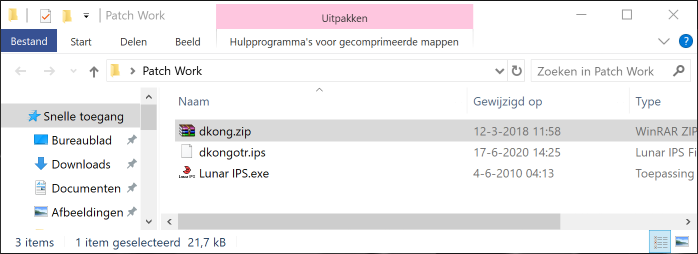
- #HOW TO CREATE IPS PATCH HOW TO#
- #HOW TO CREATE IPS PATCH PATCH#
- #HOW TO CREATE IPS PATCH SOFTWARE#
- #HOW TO CREATE IPS PATCH CODE#
#HOW TO CREATE IPS PATCH PATCH#
The -u (unified) option lets patch know that the patch file contains unified context lines. To make patch act upon the patch file and modify the working/slang.c file, use the following command. Giving it a “.patch” extension is a good idea however, as it does make it clear what type of file it is.

diff -u working/slang.c latest/slang.c > slang.patch It’s the same command as above, with the output from diff redirected into a file called slang.patch. To capture those differences in a patch file, use the following command. Seeing this type of output from diff confirms that there are differences between the two file versions and that the original file needs patching. If the files were identical, there would be no output listed at all. This is the command we issue to diff: diff -u working/slang.c latest/slang.cĭiff produces an output listing showing the differences between the files. The original file is listed first, then the modified file. We provide the names of the files so that diff knows which files to compare. The -u (unified) option tells diff to also list some of the un-modified text lines from before and after each of the changed sections. These lines are called context lines. They help the patch command locate precisely where a change must be made in the original file. We’ll compare the version in the working directory to the one in the latest directory. Its default action is to list the modified lines in the terminal window. The diff command finds the differences between two files. Finding the Differences Between Two Versions of a File To be safe, the working directory is a copy of the current version of the text files.
#HOW TO CREATE IPS PATCH CODE#
The latest directory holds the most recent version of those source code files, some of which have been modified. The working directory holds a set of source code files. One is called working, and the other one is called latest. In this scenario, we are in a directory called work which contains two other directories.
#HOW TO CREATE IPS PATCH HOW TO#
RELATED: How to Compare Two Text Files in the Linux Terminal Our Example Scenario
#HOW TO CREATE IPS PATCH SOFTWARE#
The patch command is most often used by people working with software source code files, but it works equally well with any set of text files whatever their purpose, source code or not. We’ll walk you through it in this article. What do you do with the patch file to actually patch your files? Apart from almost being a tongue-twister, that’s also a good question. Why send dozens of files round when you can send one file, or post one file for easy download? This setting will enable your pod to access the K8S DNS service.Sometimes you don’t get sent the modified files. If your Pod still needs to access/resolve internal Kubernetes hostnames, you need to set the dnsPolicy spec field set to ClusterFirstWithNoHostNet. As such, it makes it a good candidate for a DaemonSet object. This also means that you can only run a single instance of this Pod on a given node (talking about shortcomings.). No need to keep a DNS mapping record in that case. It means that you won't need a service to expose your Pod, as it will always be accessible on your host via a single port (the containerPort you specified in the manifest).

Nginx-service 10.102.64.83 A.B.C.D 80/TCP 23hĪ solution that could work (and not only for testing, though it has its shortcomings) is to set your Pod to map the host network with the hostNetwork spec field set to true. What am I missing ? Or at least, where can I find informations on my network traffic in order to see if packets are coming ? My deployment is working as I can reach my nginx container from inside the k8s cluster using it's ClusterIP. I was hopping that my service would get the IP A.B.C.D (which is one of my company's network). My yaml file is : apiVersion: apps/v1beta1


 0 kommentar(er)
0 kommentar(er)
